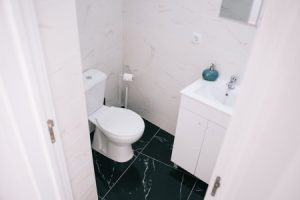**Abstract:** Discover how feng shui ornaments can transform your bedroom into a serene sanctuary, enhancing your sleep quality and promoting relaxation. Explore practical tips and insights to create a peaceful environment.
The Power of Feng Shui in Your Bedroom
Feng shui, an ancient Chinese practice, emphasizes the importance of harmonizing your living space with energy flows. In the bedroom, this translates to creating a calming environment that encourages restful sleep. Incorporating feng shui ornaments can significantly impact your sleep quality by fostering tranquility and positive energy. Understanding the principles of feng shui will help you select the right ornaments that align with your personal needs and enhance your overall well-being.
Selecting the Right Ornaments for Sleep Enhancement
Choosing feng shui ornaments that resonate with your personal energy is crucial. Items such as calming crystals, soft lighting, and harmonious artwork can contribute to a peaceful atmosphere. For example, amethyst is known for its calming properties, promoting relaxation and restful sleep. Placing a small amethyst cluster on your bedside table can help absorb negative energy and create a serene space. Additionally, consider incorporating soothing colors like soft blues and greens in your decor, as they are believed to promote tranquility and relaxation.
<strong Arranging Your Space for Optimal Energy Flow
Proper arrangement of your bedroom furniture is vital in feng shui. The bed should be positioned in a way that allows you to see the door without being directly in line with it. This position is often referred to as the “command position,” as it provides a sense of safety and control. Avoid clutter under the bed, as it can block energy flow and disrupt your sleep. Instead, maintain an organized space with feng shui ornaments that promote calmness and relaxation.
The Role of Light and Sound in Sleep Quality
Incorporating soft lighting and sound elements can enhance the feng shui of your bedroom. Use dimmable lamps or candles to create a warm, inviting atmosphere. Consider adding a water fountain or soft wind chimes to introduce gentle, soothing sounds. These elements can help mask disruptive noises and create a serene environment conducive to sleep. Moreover, natural light plays a crucial role in regulating your circadian rhythm, so ensure your bedroom has blackout curtains for a dark sleeping space when needed.
<strong.Bringing Nature Indoors
Integrating natural elements into your bedroom can significantly improve your sleep quality. Plants such as lavender or peace lilies not only purify the air but also promote relaxation. The presence of greenery can create a calming atmosphere, making it easier to unwind after a long day. Additionally, consider using natural materials for your bedding and decor, as they can enhance comfort and contribute to a peaceful environment.
<strong.Mindfulness and Intention Setting with Feng Shui
Practicing mindfulness and setting intentions can amplify the benefits of feng shui in your bedroom. Before sleep, take a moment to reflect on your day and express gratitude for the positive experiences. Incorporate a gratitude journal into your bedtime routine, allowing you to focus on the positive aspects of your life. This practice not only promotes relaxation but also aligns your energy with a sense of peace and fulfillment.
<strong.Conclusion: Transform Your Sleep Environment
Enhancing your sleep quality through feng shui ornaments and practices is a journey towards creating a peaceful sanctuary. By selecting the right ornaments, arranging your space thoughtfully, and incorporating natural elements, you can cultivate an environment that promotes relaxation and restful sleep. Embrace the principles of feng shui and experience the transformative power of a well-designed bedroom that supports your well-being and enhances your quality of life.










